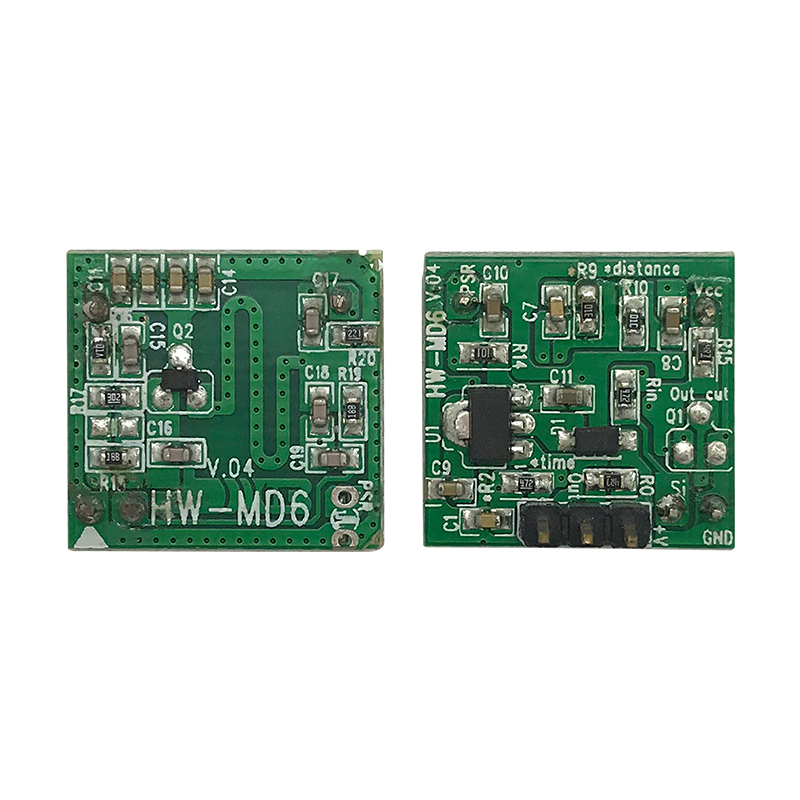 1004,West-CBD,No.139 Binhe Rd,Futian District,Shenzhen, China Post Code:518048
1004,West-CBD,No.139 Binhe Rd,Futian District,Shenzhen, China Post Code:518048
 +86-18682200597
+86-18682200597
 sales@szhaiwang.com
sales@szhaiwang.com
 1004,West-CBD,No.139 Binhe Rd,Futian District,Shenzhen, China Post Code:518048
1004,West-CBD,No.139 Binhe Rd,Futian District,Shenzhen, China Post Code:518048
 +86-18682200597
+86-18682200597
 sales@szhaiwang.com
sales@szhaiwang.com
source:Industry News release time:2023-03-15 Hits: Popular:Infrared sensing module

When hardware support for circular buffers isn't available, you have to "fake" them. Also, since ANSI C has no construct to describe circular buffers, most C compilers can't generate code to use them, even if the target processor has them.
You can always implement a circular buffer by duplicating the logic of a circular buffer in software (and many have), but the overhead can be prohibitive; the circular-fake might take several instructions to implement, compared to just a single instruction to do the multiply-accumulate operation. Therefore you need to fake it.
Here are several basic techniques to fake circular buffers:
1. Split the calculation: You can split any FIR calculation into its "pre-wrap" and "post-wrap" parts. By splitting the calculation into these two parts, you essentially can do the circular logic only once, rather than once per tap. (See fir_double_z in FirAlgs.c above.)
2. Duplicate the delay line: For a FIR with N taps, use a delay line of size 2N. Copy each sample to its proper location, as well as at location-plus-N. Therefore, the FIR calculation's MAC loop can be done on a flat buffer of N points, starting anywhere within the first set of N points. The second set of N delayed samples provides the "wrap around" comparable to a true circular buffer. (See fir_double_z in FirAlgs.c above.)
3. Duplicate the coefficients: This is similar to the above, except that the duplication occurs in terms of the coefficients, not the delay line. Compared to the previous method, this has a calculation advantage of not having to store each incoming sample twice, and it also has a memory advantage when the same coefficient set will be used on multiple delay lines. (See fir_double_h in FirAlgs.c above.)
4. Use block processing: In block processing, you use a delay line which is a multiple of the number of taps. You therefore only have to move the data once per block to implement the delay-line mechanism. When the block size becomes "large", the overhead of a moving the delay line once per block becomes negligible.
Read recommendations:
What NTC thermal resistance is used for Xiaomi wireless charging treasure.SMD Photosensitive sensor
Can replace Ishizuka NTC10KB3435 thermistor.Microwave Sensor Module Radar Sensor
Popular Recommended Products
PIR Lens 8308-2
2021-12-09HW-SR501PIR sensor module
2021-12-09PIR Lens 8120-5
2021-12-09PIR Lens 7707-5
2021-12-09PIR Lens 8002-3
2021-12-09HW-MS07 microwave sensor module
2021-12-07PIR Lens 2135-1
2021-12-09PIR Lens 7709-4
2021-12-09HR008
2021-11-27HW-XC509 microwave sensor module
2021-12-07PND103F3950FTR318
2021-11-27Principle of sensor selection.Automatic machine mirror manufacturer
2022-10-17How to Apply NTC Thermistor to Suppress Surge Current in Lighting System.PMMA lens Manufacturing
2022-06-21Discussion on High Stable and Fast NTC Temperature Sensor.Human Body Motion Sensor
2023-07-24Drop -shaped bead -shaped NTC thermal resistance
2023-02-17NTC temperature sensor for automotive intelligent cockpit control system.Pyroelectric infrared senso
2023-09-25NTC thermistor commonly used in electric cars
2022-12-05Medical enameled wire NTC thermistor.Microwave Radar Sensor wholesale
2022-08-09NTC Thermistor for Cordless Drill Protection Board.infrared sensor lens Manufacturing
2022-07-14The application of NTC thermistor in the cold chain temperature recorder.Radar Microwave Induction S
2023-04-25The main purpose of ntc thermistor.Radar Microwave Induction Sensor Switch
2022-05-17
szhaiwang4@hotmail.com
+86-18682200597
sales@szhaiwang.com